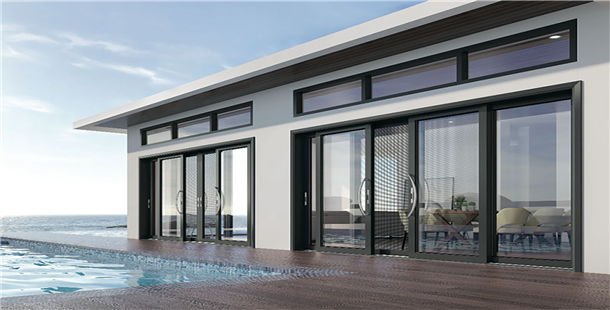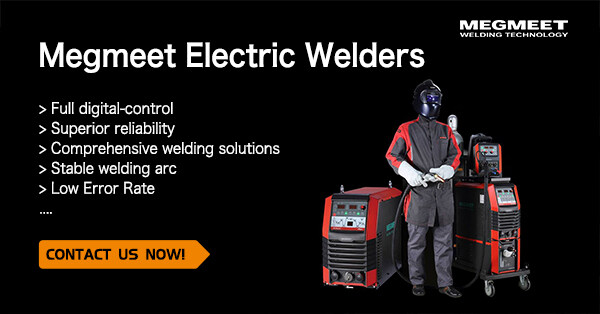Welding plays a vital role in the construction industry, enabling the fabrication and assembly of strong and durable structures. Structural welding (or construction welding), in particular, requires precision, adherence to safety standards, and the use of appropriate equipment and techniques. In this blog, we will explore the secrets of welding in construction. From the different welding processes used to join metal components to the essential equipment and tools employed, we will delve into the intricacies of structural welding. Whether you are a construction professional or an enthusiast seeking to expand your knowledge, this article provides valuable insights into the techniques and equipment used in welding construction.

I. Welding Techniques for Construction Welding.
Construction welding is a fundamental process in construction, enabling the fabrication of robust and long-lasting structures. To achieve high-quality welds, it is essential to understand and apply various welding techniques specifically designed for the structural industry. In the following, we will explore the key welding techniques utilized in construction welding, highlighting their characteristics and applications.
1) Shielded Metal Arc Welding (SMAW)
Shielded Metal Arc Welding, commonly known as SMAW or stick welding, is a widely employed technique in structural welding. It involves the use of a consumable electrode coated with a flux. When the electrode comes into contact with the base metal, an electric arc is generated, melting both the electrode and the base metal, and a weld pool is formed. The flux coating creates a shielding gas, protecting the weld pool from atmospheric contamination.
SMAW is favored for its versatility, as it can be performed in various positions, including overhead and vertical welding. This technique is particularly suitable for welding thick materials and is extensively used in the construction of steel structures, pipelines, and heavy machinery.
2) Gas Metal Arc Welding (GMAW)
Gas Metal Arc Welding, commonly referred to as GMAW or MIG (Metal Inert Gas) welding, is another prevalent technique employed in structural welding. It utilizes a continuous wire electrode that is fed through a welding gun. A shielding gas, such as argon or a mixture of argon and carbon dioxide, is also supplied to protect the weld pool from atmospheric contamination.
GMAW offers high productivity and excellent control, making it suitable for welding thin to medium-thickness materials. It is commonly used in construction for joining beams, columns, and metal plates. GMAW produces high-quality welds with minimal spatter, making it a preferred choice in many structural welding applications.
3) Flux-cored arc Welding (FCAW)
Flux-cored arc Welding, or FCAW, is a variation of GMAW that utilizes a tubular wire electrode filled with flux instead of a solid wire. The flux inside the electrode creates a shielding gas when heated, protecting the weld pool from contaminants. FCAW offers higher deposition rates and better penetration compared to GMAW, making it suitable for welding thicker materials.
FCAW is known for its versatility and efficiency. It can handle joints with poor fit-up and is particularly useful in outdoor and windy conditions due to its self-shielding capabilities. FCAW finds widespread application in various construction projects, including bridges, buildings, and heavy equipment.
II. Welding Equipment for Construction Welding.
In the realm of construction welding, the use of appropriate welding equipment is crucial to ensure successful and reliable welds. With the right tools and machinery, welders can effectively join metal components and construct robust structures. Next, we will delve into the essential welding equipment used in structural welding, highlighting their significance and functionalities.
1) Welding Machine and Power Source
The welding machine or power source serves as the heart of any welding operation. It provides the necessary power and control for the welding process. For welding structural industry, different types of welding machines are employed based on the welding technique being used.
Shielded Metal Arc Welding (SMAW): requires a constant current (CC) welding machine capable of delivering the required amperage for the desired weld size and material thickness.
Gas Metal Arc Welding (GMAW) and Flux-Cored Arc Welding (FCAW): utilize a constant voltage (CV) welding machine that delivers a steady voltage to maintain the desired arc length and control the wire feed.

2) Welding Electrodes and Wire
Welding electrodes or wires are consumable materials used in the welding process. The selection of electrodes or wire depends on the welding technique, base metal, and desired weld characteristics. Each welding technique requires specific consumables to achieve optimal results.
SMAW employs consumable electrodes coated with flux, which produces a shielding gas during the welding process to protect the weld from atmospheric contamination.
GMAW uses solid wire electrodes that are fed through the welding gun, along with a shielding gas, to create a protective atmosphere around the weld pool.
FCAW utilizes a tubular wire electrode filled with flux, which provides a shielding gas when heated, eliminating the need for an external shielding gas source.
3) Personal Protective Equipment (PPE)
Personal Protective Equipment is essential for welders to safeguard themselves during the welding process. PPE includes items such as welding helmets, safety glasses, welding gloves, welding jackets, and welding boots. These protective gear elements shield the welder from harmful UV radiation, sparks, heat, and potential hazards in the welding environment.
Wearing the appropriate PPE ensures the safety and well-being of welders, preventing injuries and long-term health risks associated with welding operations. To learn how to create a safe welding environment, you can read the previous article: 15 Tips for Improving Welding Safety.
In conclusion, understanding the techniques and equipment used in structural welding is essential for ensuring the integrity and strength of construction projects. By exploring various welding processes, equipment, and tools, we have gained valuable insights into the world of structural welding in construction. From choosing the right welding technique for specific joints to utilizing the appropriate equipment and tools, construction professionals can achieve high-quality and safe welds.
If you want to learn more welding tips, you can collect Megmeet News Center Page or follow our LinkedIn page.
Related articles
1. Common Welding Methods for Steel Structures Welding
2. Efficient Welding Technologies and Innovative Welding Solutions For Automotive Industry
3. How to Choose the Best Welding Equipment for Automotive Applications?
4. Expert Tips for Achieving Seamless Welds: A Guide for Welding Perfection
5. 10 Secrets to Reduce Welding Spatter





